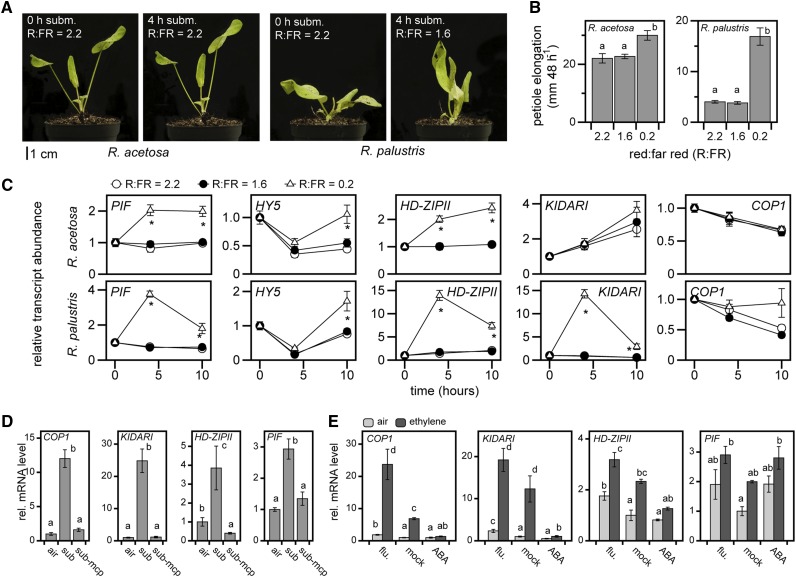Figure 5.
The Role of Light Quality and Hormonal Changes in Underwater Growth.
(A) Photographs demonstrating the typical hyponastic response of R. palustris upon submergence and the lack of this response in R. acetosa. R:FR is measured between hyponastic lamina or at the lamina surface under submerged or air conditions.
(B) Petiole elongation under various R:FR treatments (ambient, 2.2; submergence mimic, 1.6; and very low R:FR, 0.2) of the youngest leaf (third leaf) over a 48-h period (mean ± sem, n = 12; P < 0.05, Tukey LSD). Different letters above each bar indicate statistically significant differences.
(C) Rumex OMCL family transcript accumulation of key regulators of light modified elongation in petioles upon three R:FR levels (mean ± sem, n = 5; *P < 0.05, Tukey LSD). PIF is fam03405.
(D) Effect of the ethylene action inhibitor 1-methylcyclopropene (1-MCP) during submergence on the expression of four light signaling genes in R. palustris after 4 h of treatment (mean ± sem, n = 5; P < 0.05, Tukey LSD). Different letters above each bar indicate statistically significant differences.
(E) The effect of ethylene and ABA manipulations on the expression of four light-signaling genes in R. palustris after 4 h of treatment (mean ± sem, n = 4; letters P < 0.05, Tukey LSD). Flu is the ABA biosynthesis inhibitor fluridone.
[See online article for color version of this figure.]

